I’m not sure exactly what “Hey, this is a World Heritage Site! Show some respect, wanker!” would be in German, but I suspect in German you probably could shout just the right mix of threat and shaming.
Spotted in March on Museum Island (Museumsinsel) in Berlin.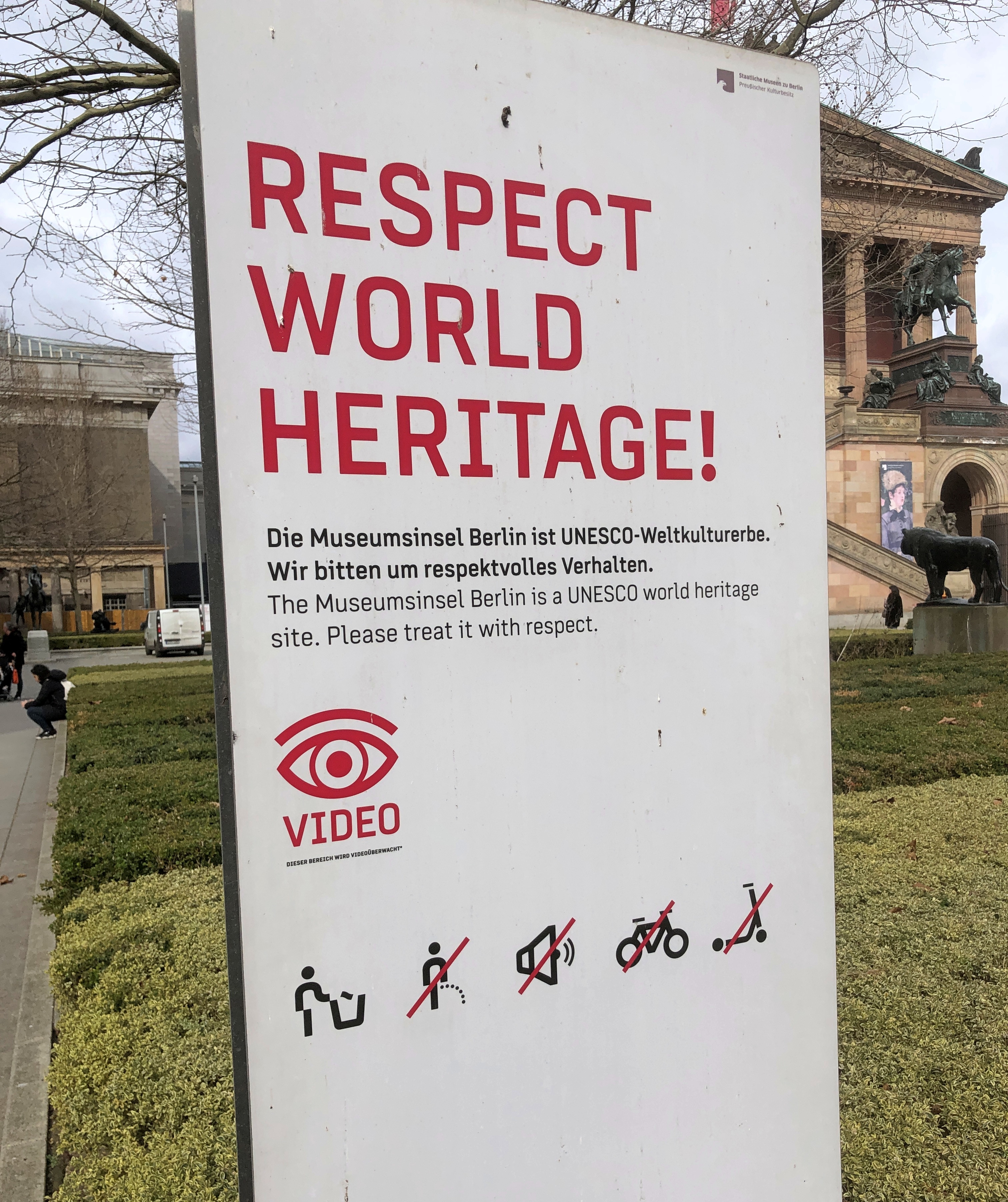
Note that the red-letter headline is in English. I think of that as more of a function of English as a ramshackle world language than the propensity of Americans, Britons or Australians to use bullhorns while peeing on World Heritage Sites from their bicycles or scooters. Well, maybe Australians would. (I trade in that stereotype with abiding affection for that nation, since the Australians I know would sound right back about Americans). To be honest, it also sounds like something Florida Man would do.
We were in the vicinity of the Alte Nationalgalerie.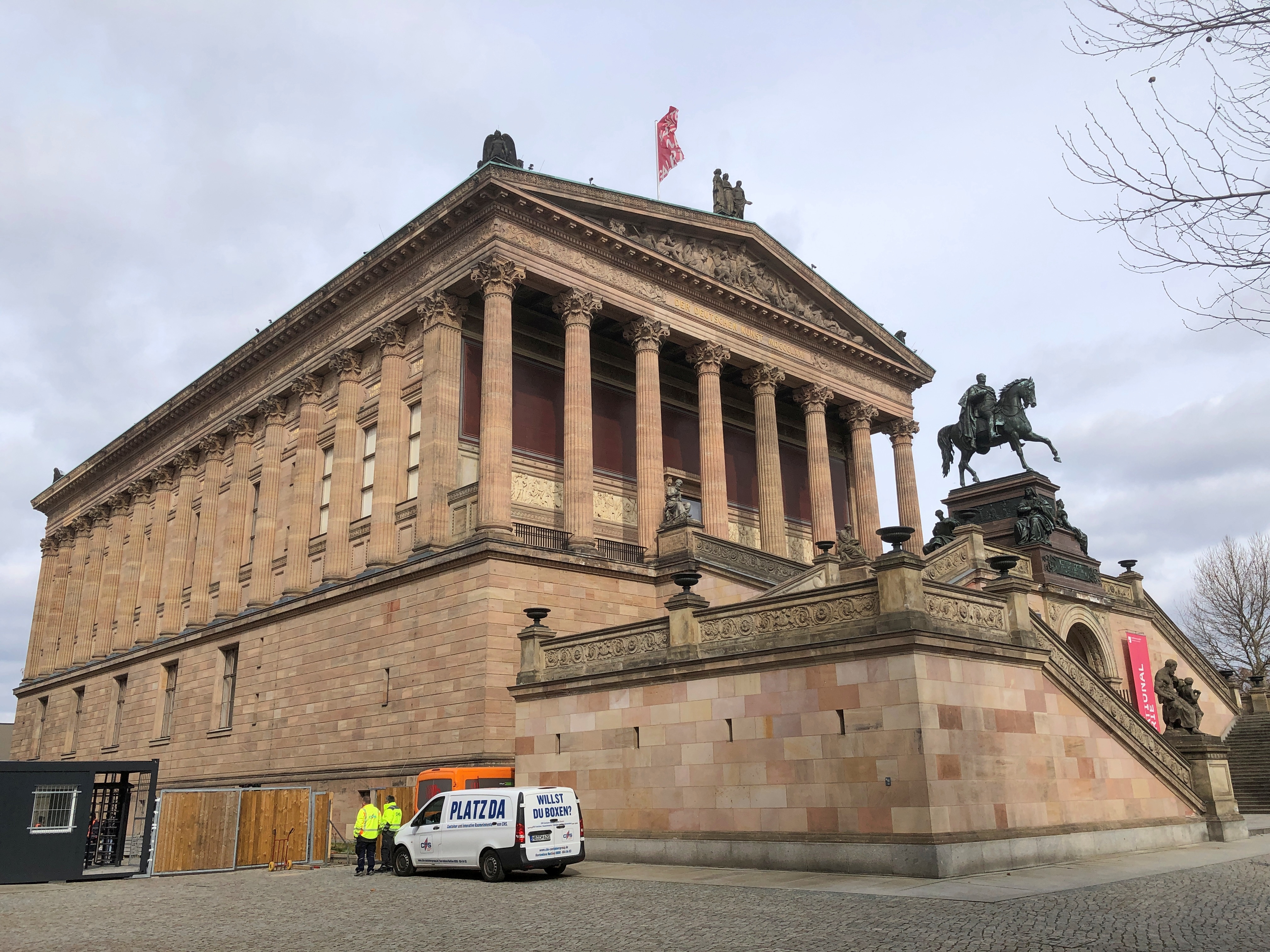
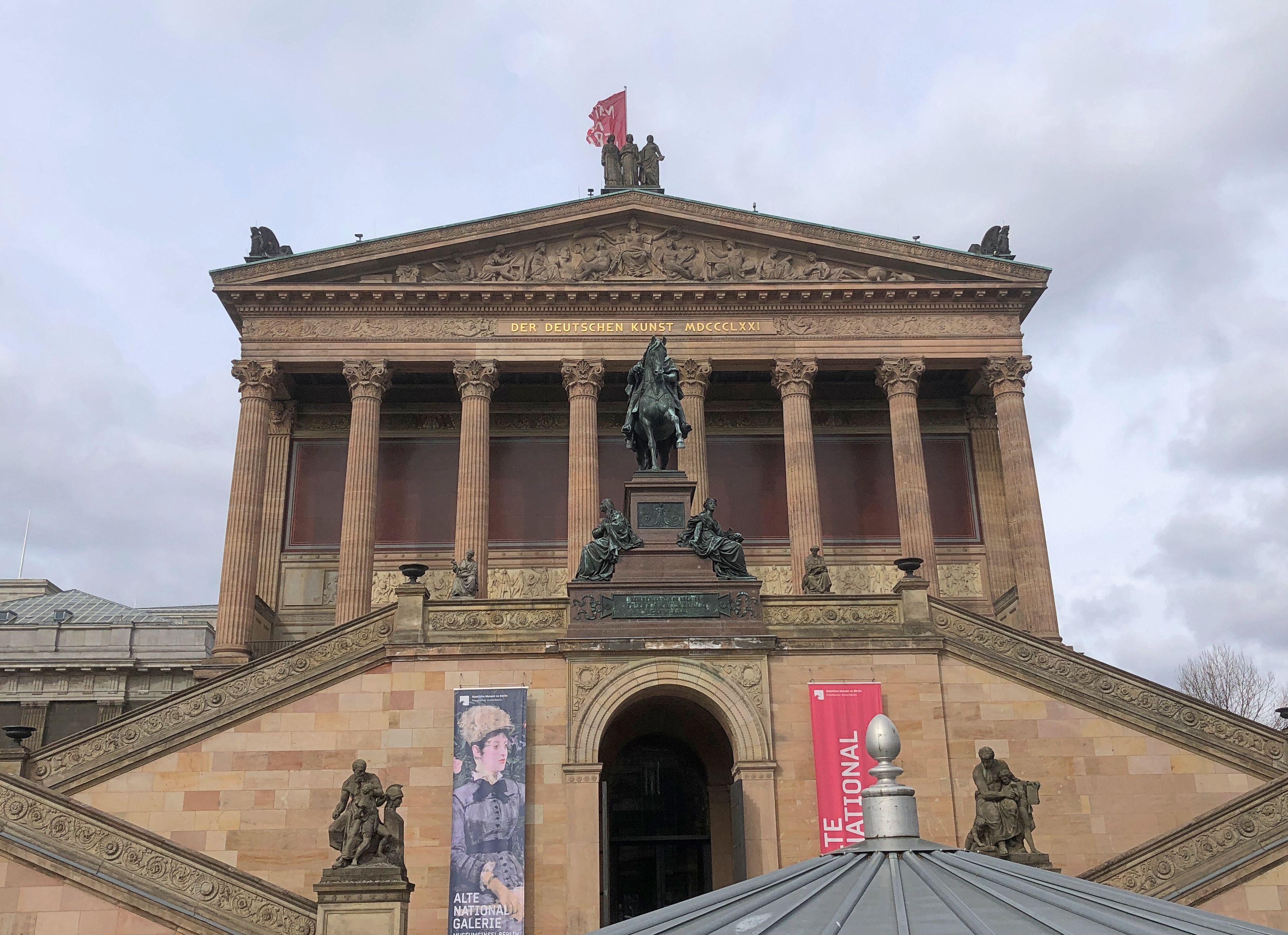
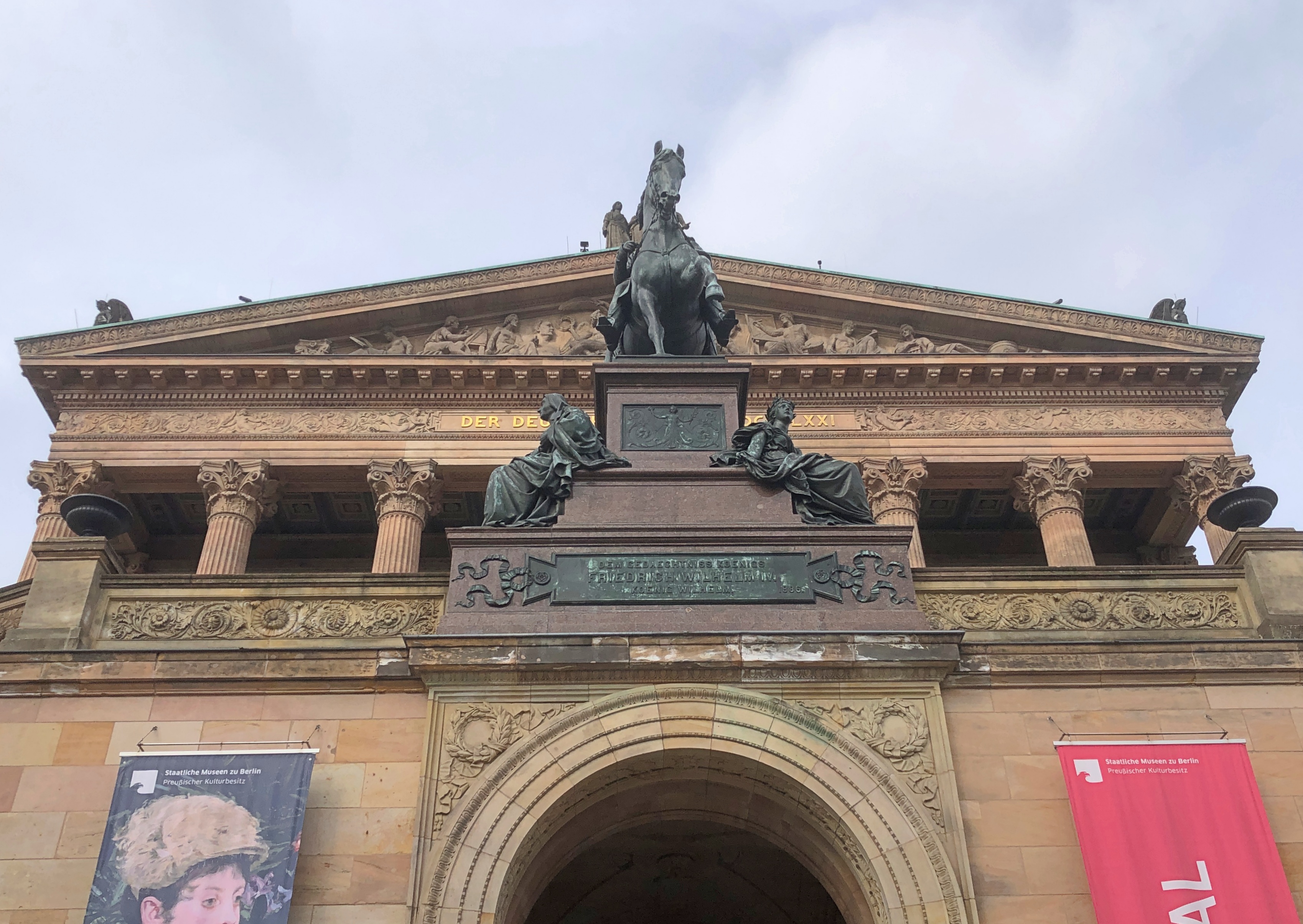
Make it a Greco-Roman temple, at least on the outside, King Friedrich Wilhelm IV must have said, though he didn’t live to see its completion in 1876. August Stüler was tasked with the design, but he didn’t live to see it done either.
The museum complex on Museum Island certainly deserves to be on the UNESCO list. A detail from the museum’s tourist leaflet shows the Old National Gallery in relation to the others, and the fact that the Pergamon Museum is “closed for refurbishment.” Dang.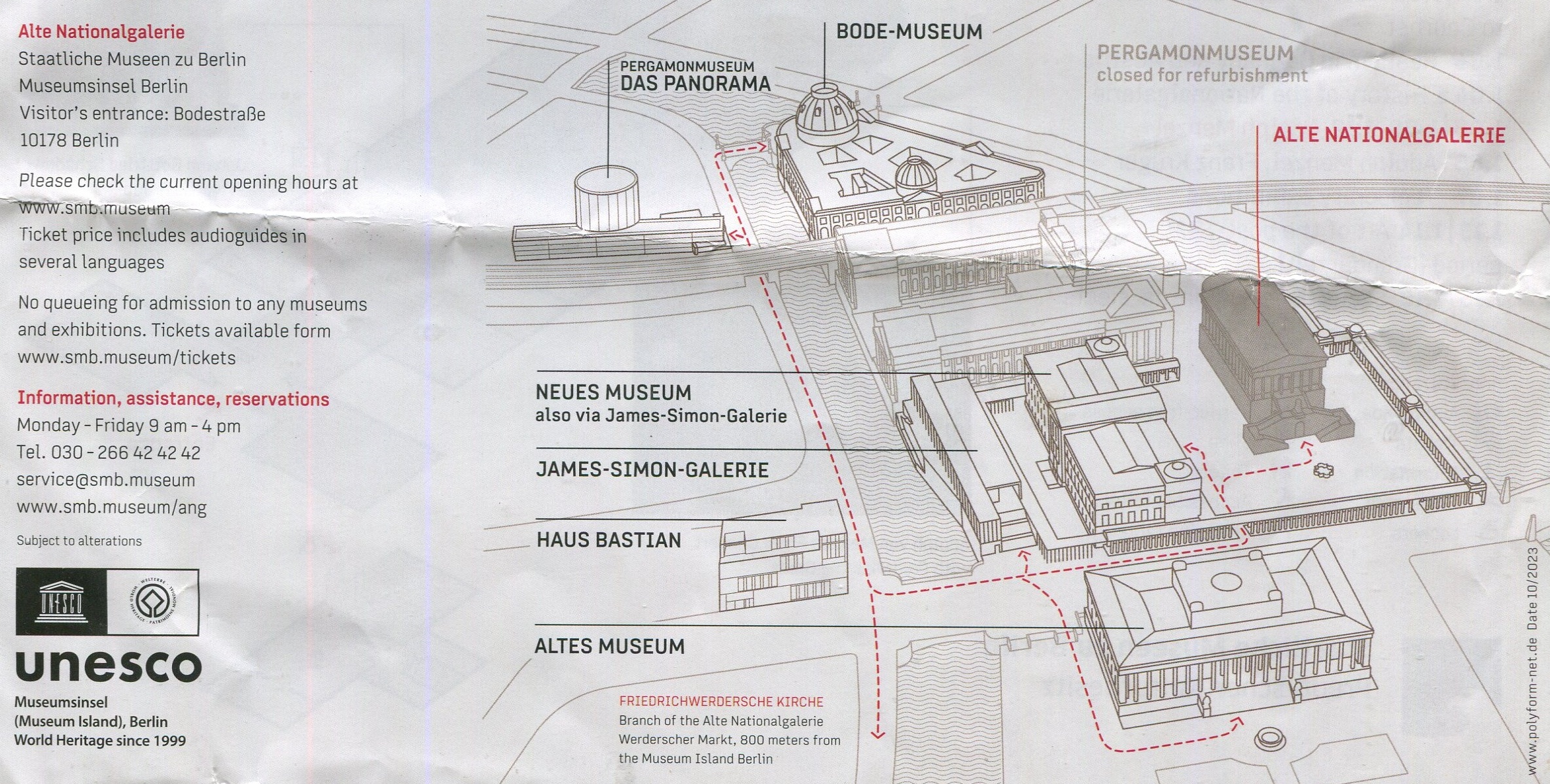
We didn’t go directly to his gallery up on the third floor, but I knew the Casper David Friedrich was a priority at Alte Nationalgalerie. Like visiting an old friend. They say maintaining social relations is important for one’s health in older years, and maybe that’s so. But I’m sure visiting old friends makes your life better in the here and now. Mine, anyway. Including mainly people, but also places and favorites in art or entertainment.
My old buddy Casper’s canvasses are usually good for more than one detail. Such as “Abtei im Eichwald” (1809/10), sporting a good old Casper David Friedrich moon.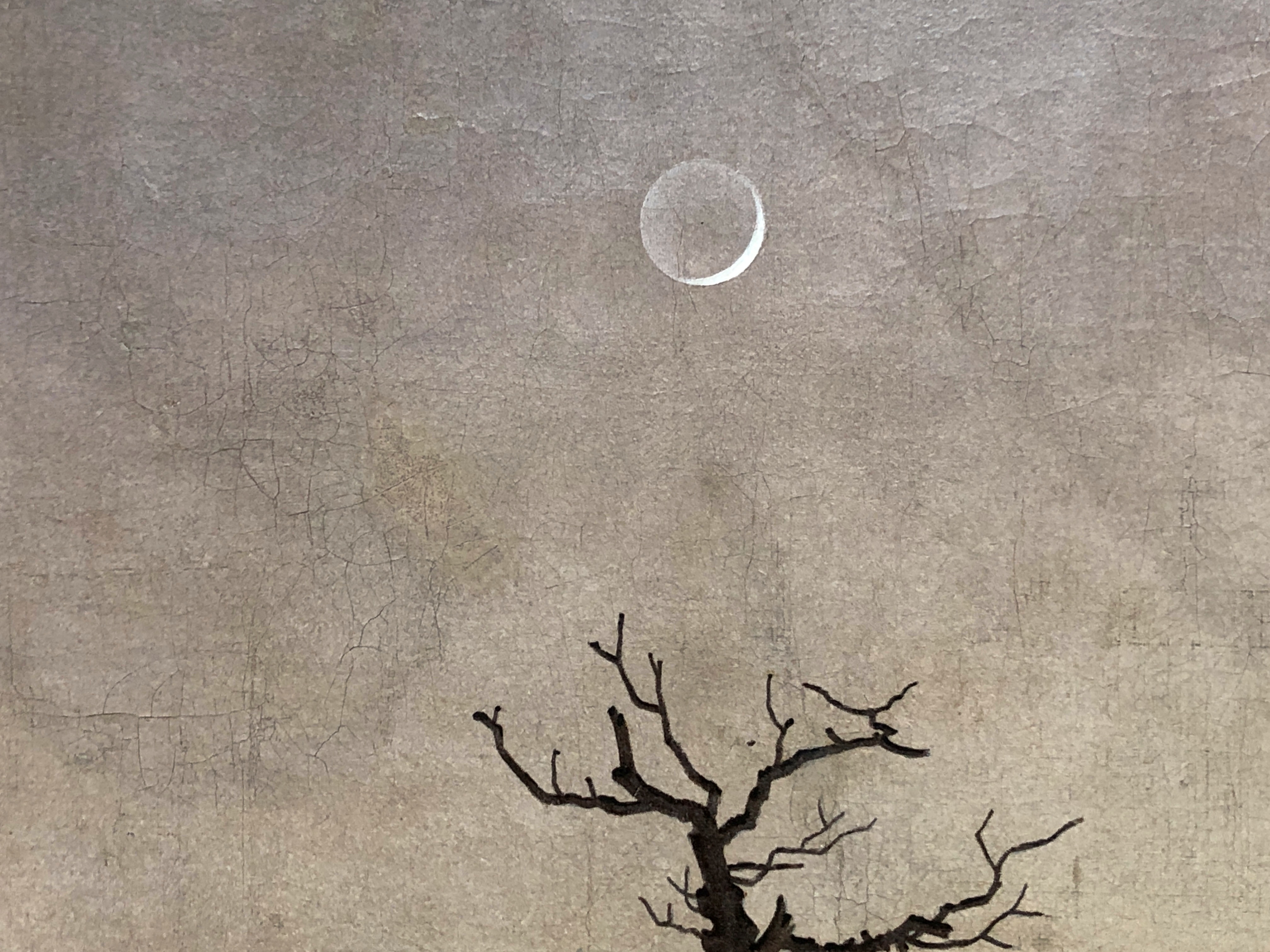
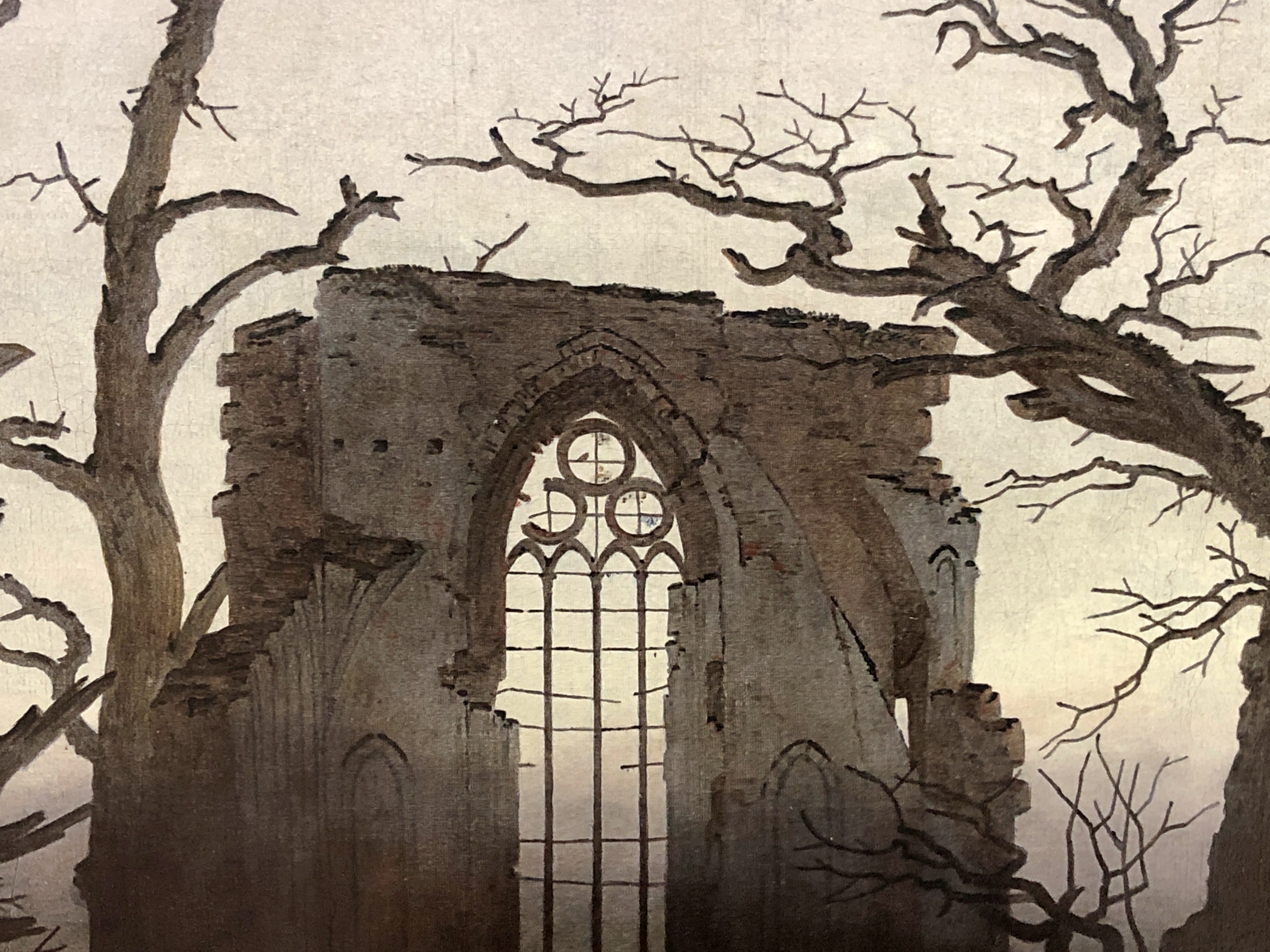
Or “Eichbaum im Schnee” (1829). The man had a gift for trees too.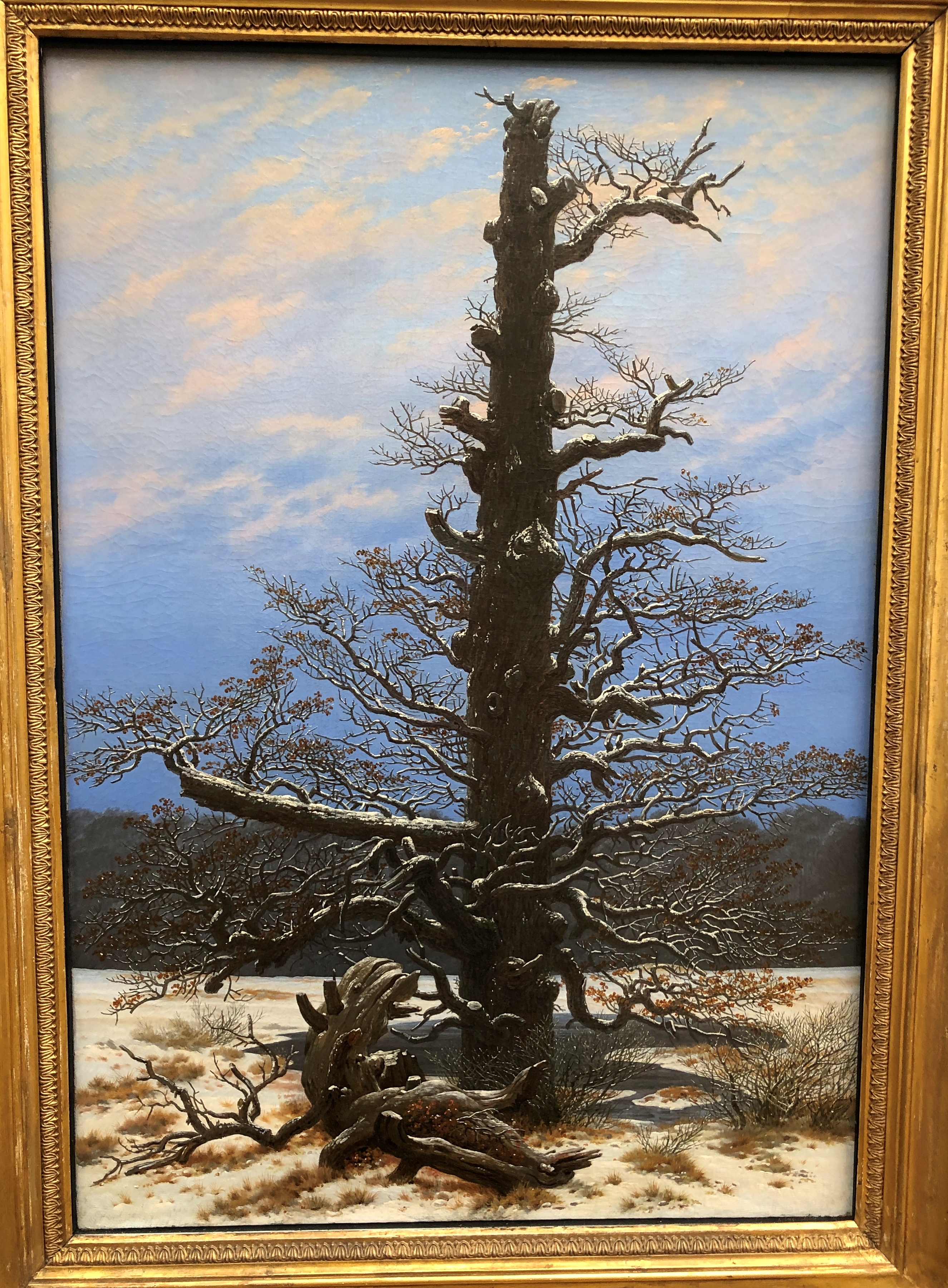
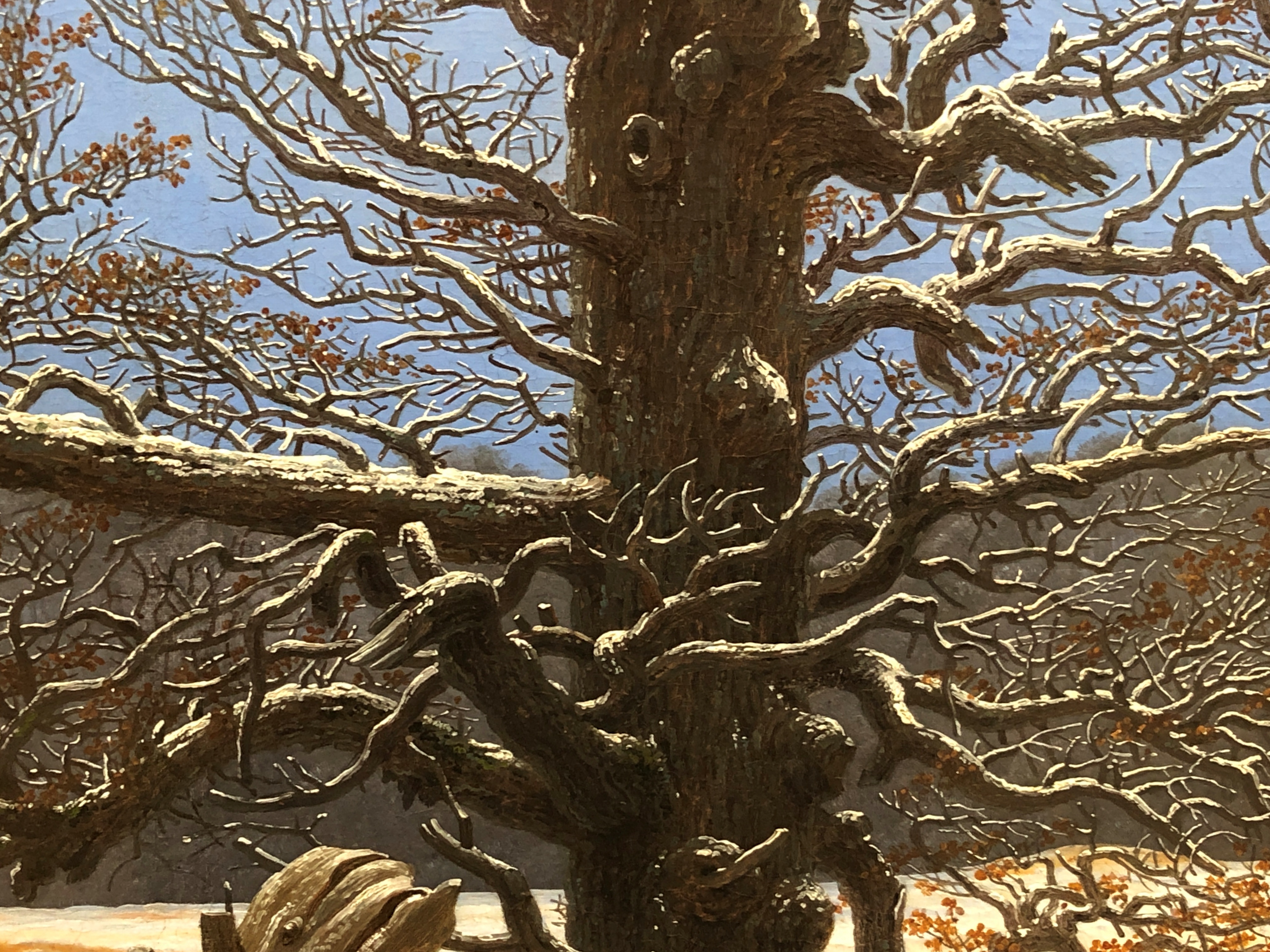
This one is CDF and it isn’t, since it is a copy of one of his paintings, “Klosterrunie im Schnee” (1891), by an unknown artist. The original didn’t survive WWII.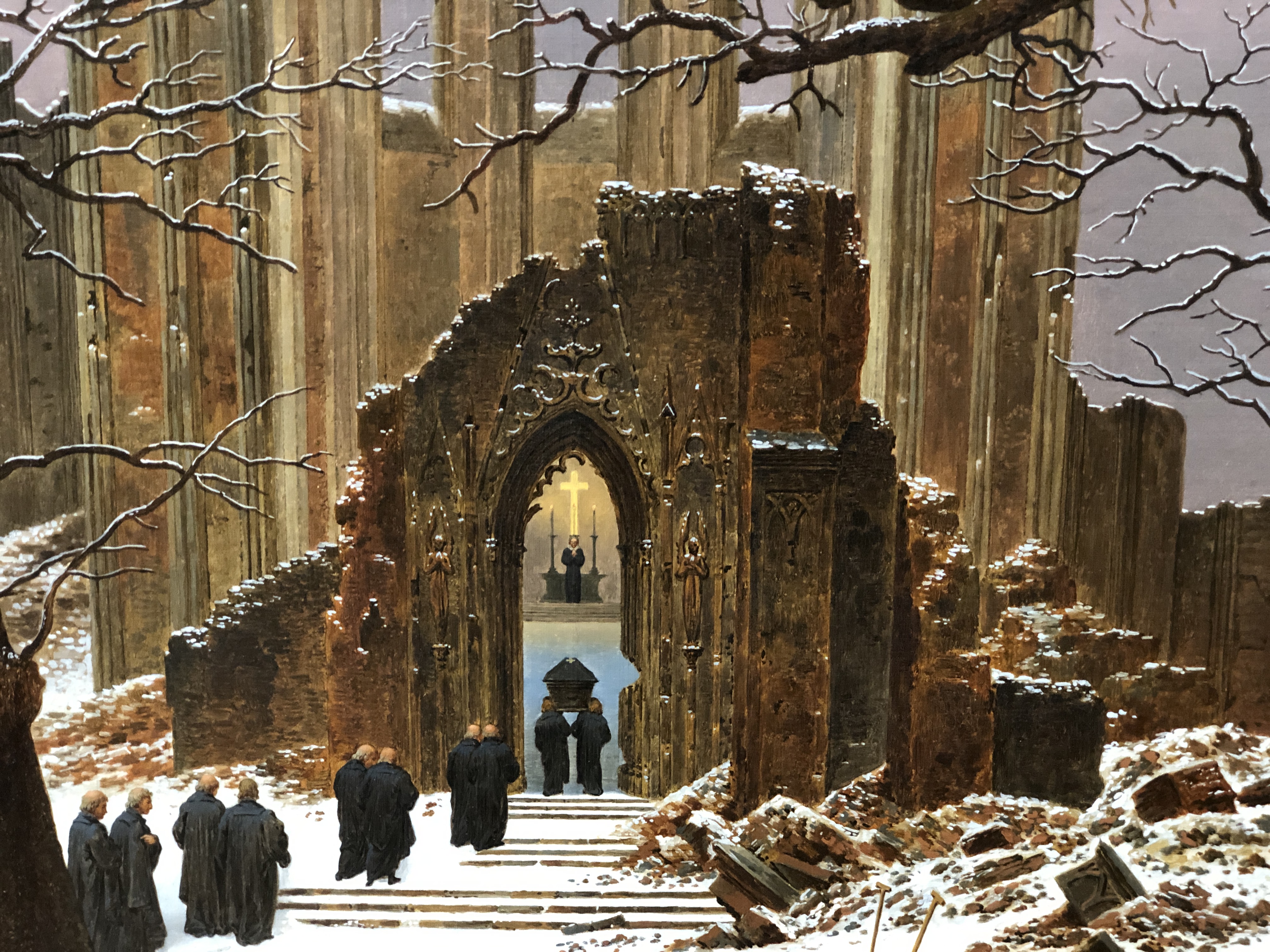
There was even an appearance of CDF himself, at work, in a portrait by colleague Georg Friedrich Kersting (d. 1847).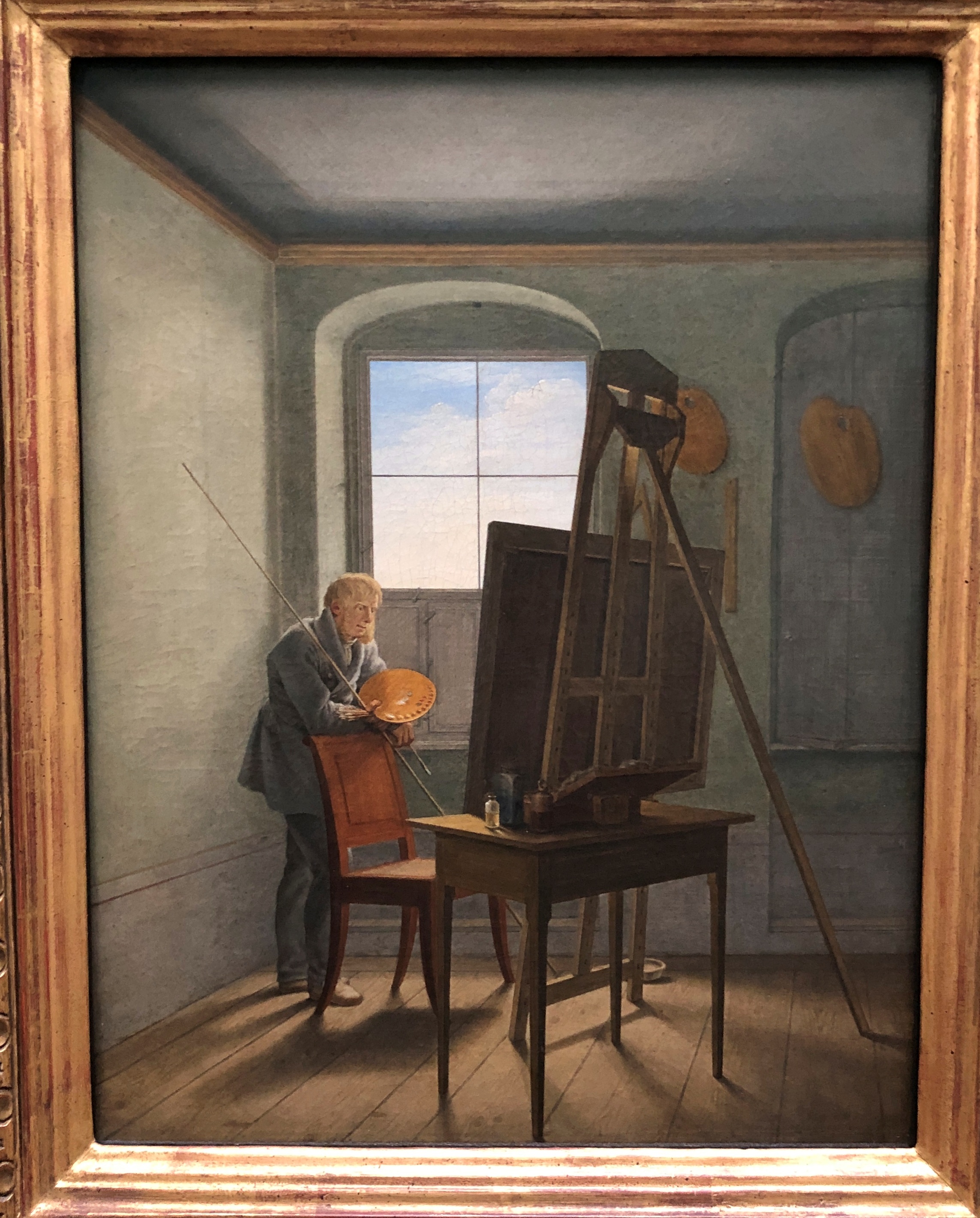
There probably would have been more CDF on display, but as it happens, the place to be right now to see many of his works is the Met, which is hosting Caspar David Friedrich: The Soul of Nature until May 11. Seventy-five paintings, drawings, and prints by Friedrich are in that show.
No matter, the museum offers plenty else to see, with a collection of European art roughly from the French Revolution to WWI. The place wasn’t crowded, but a fair number of museumgoers were around.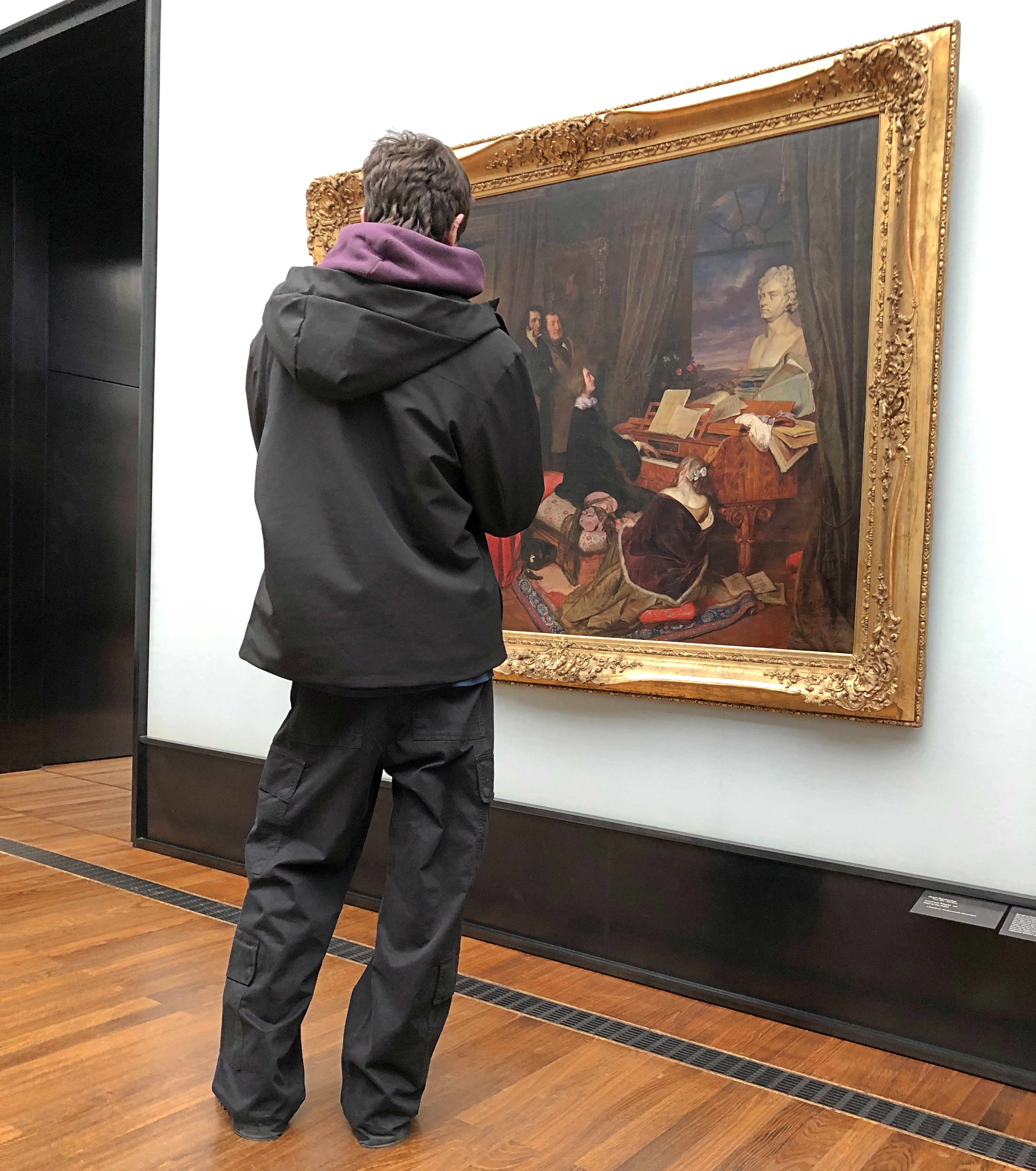
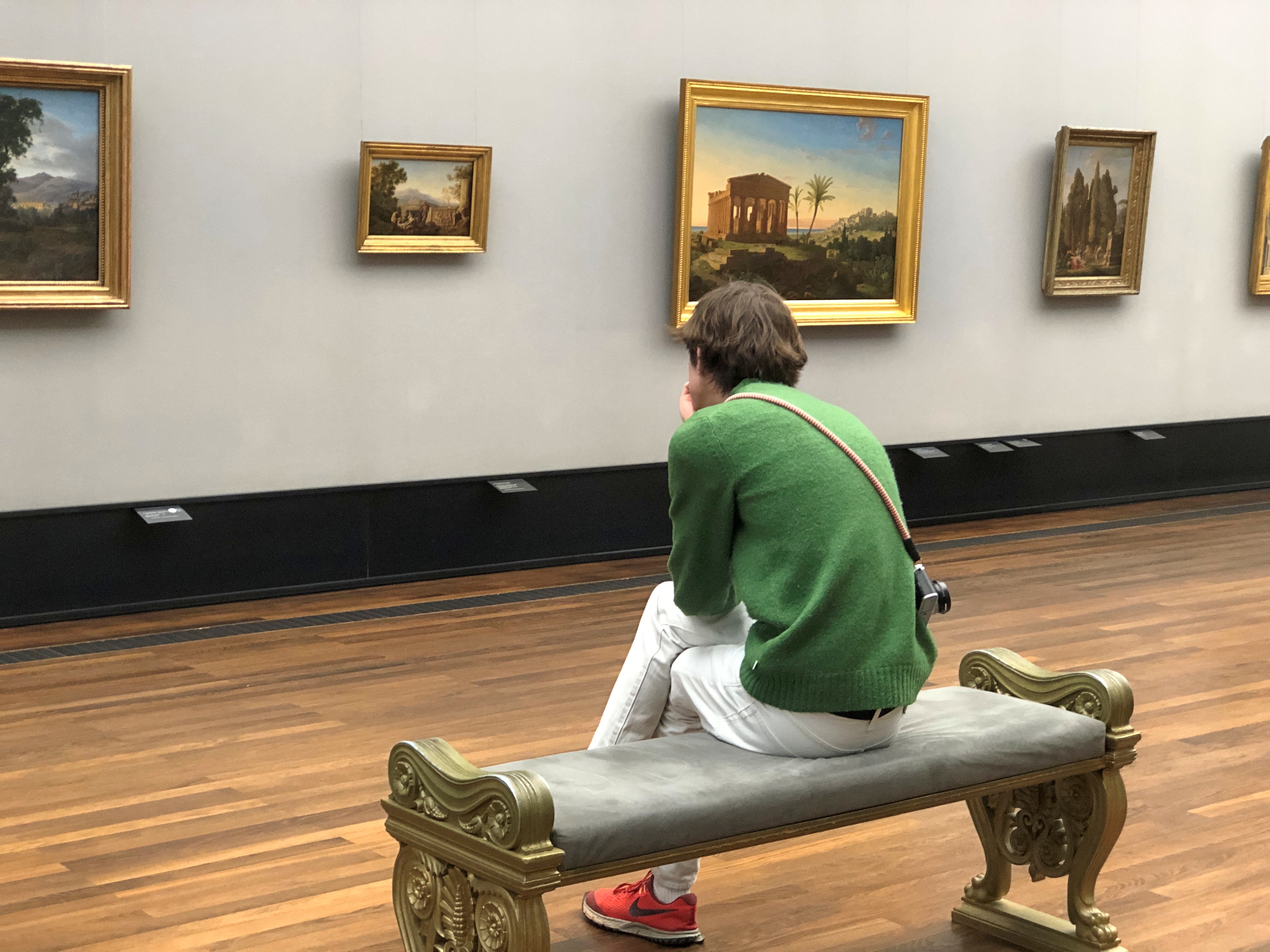
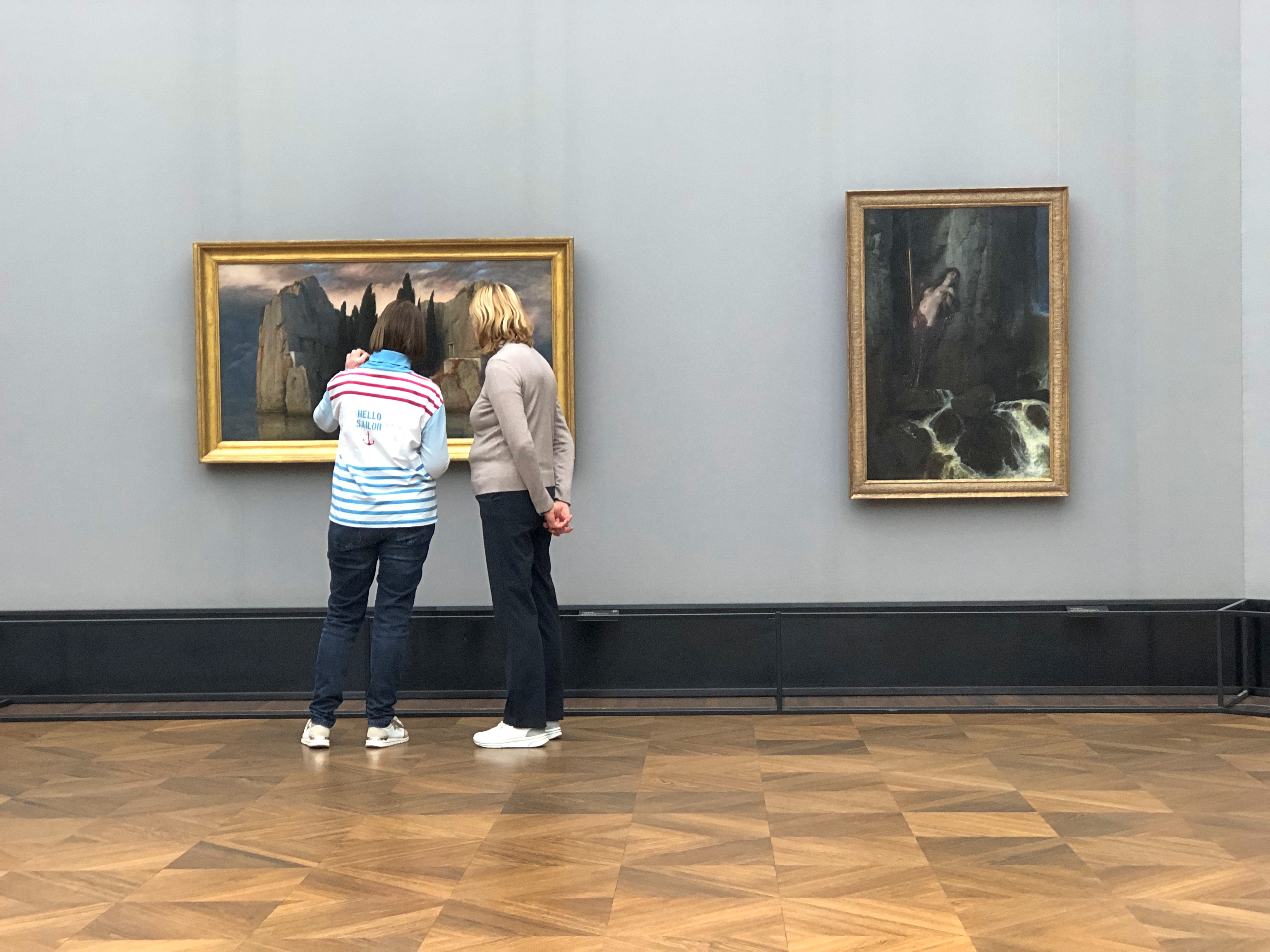
We spent a while looking around ourselves.
Detail from “Die Pontinischen Sümpfe bei Sonnenuntergang” (“The Pontine Marshes at Sunset”) (1848) by August Kopisch, which has a Chesley Bonestell vibe.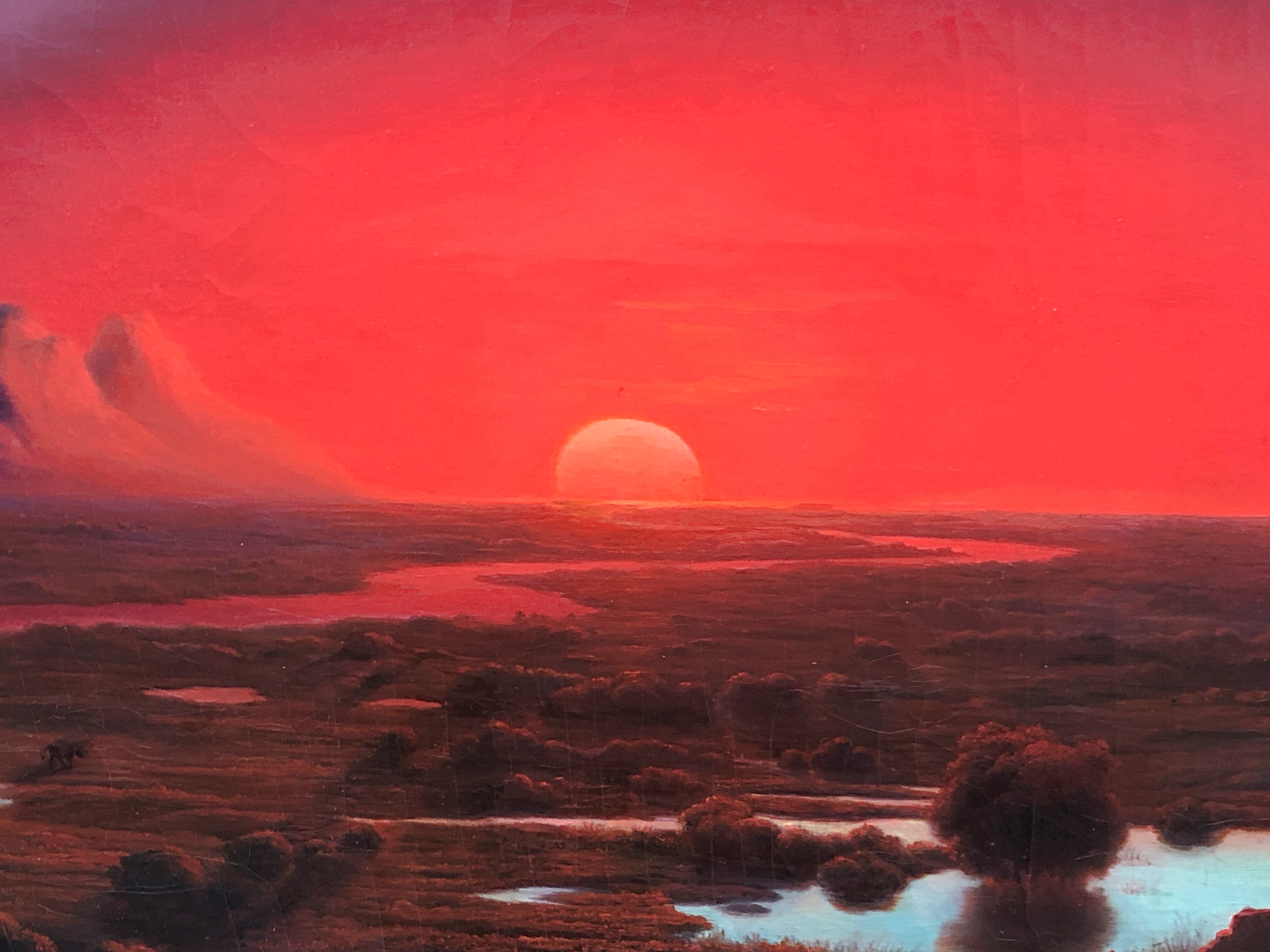
Detail from “Doppleporträt der Brüder Jacob und Wilhelm Grimm” (1855) by Elisabeth Jerichau-Baumann.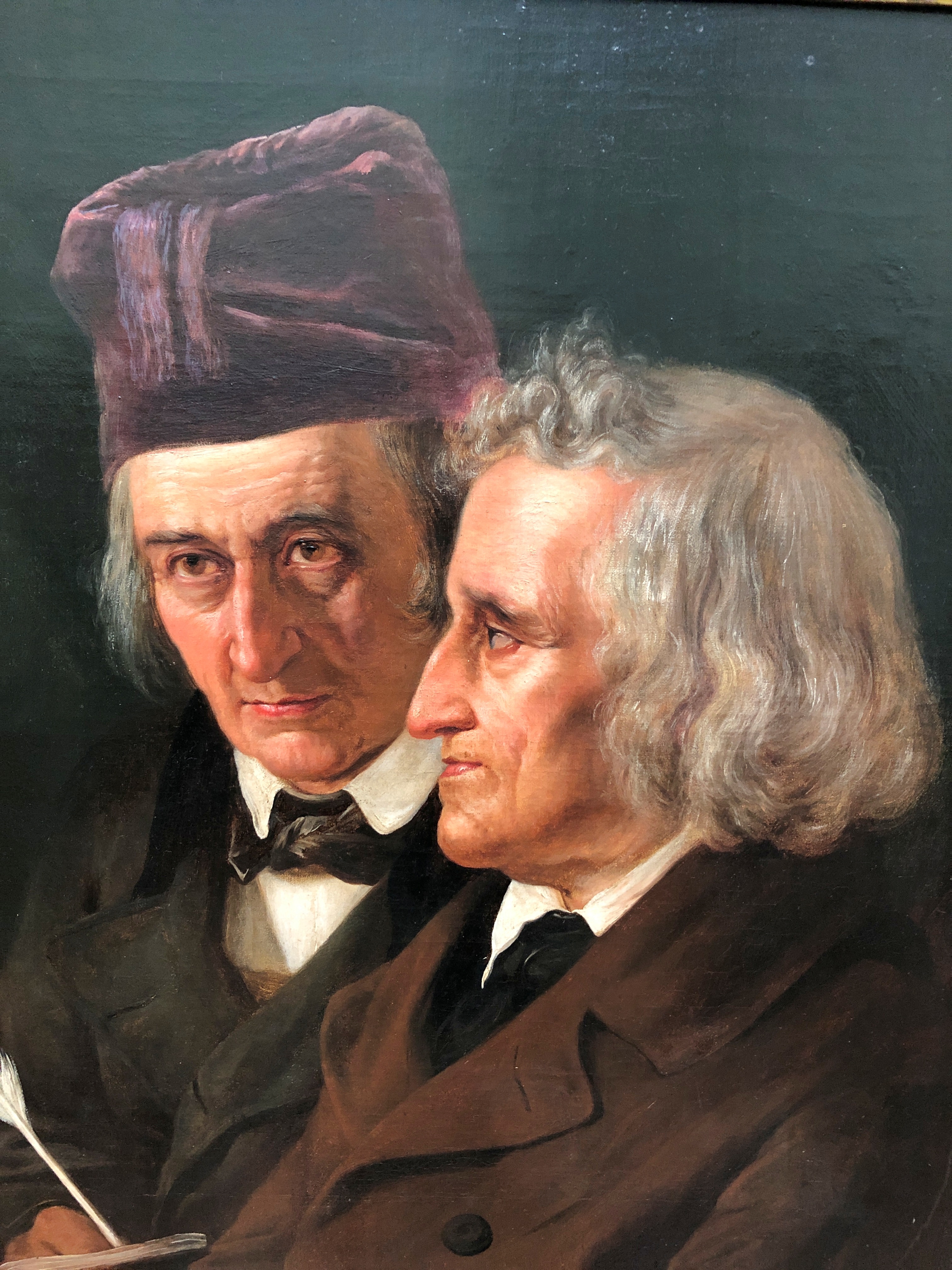
Detail from “Tükische Straßenszene“ (1888) by Osman Hamdi Bey.
Detail from “Porträt Kaiser Wilhelm II” (1895) by Vilma Parlaghy.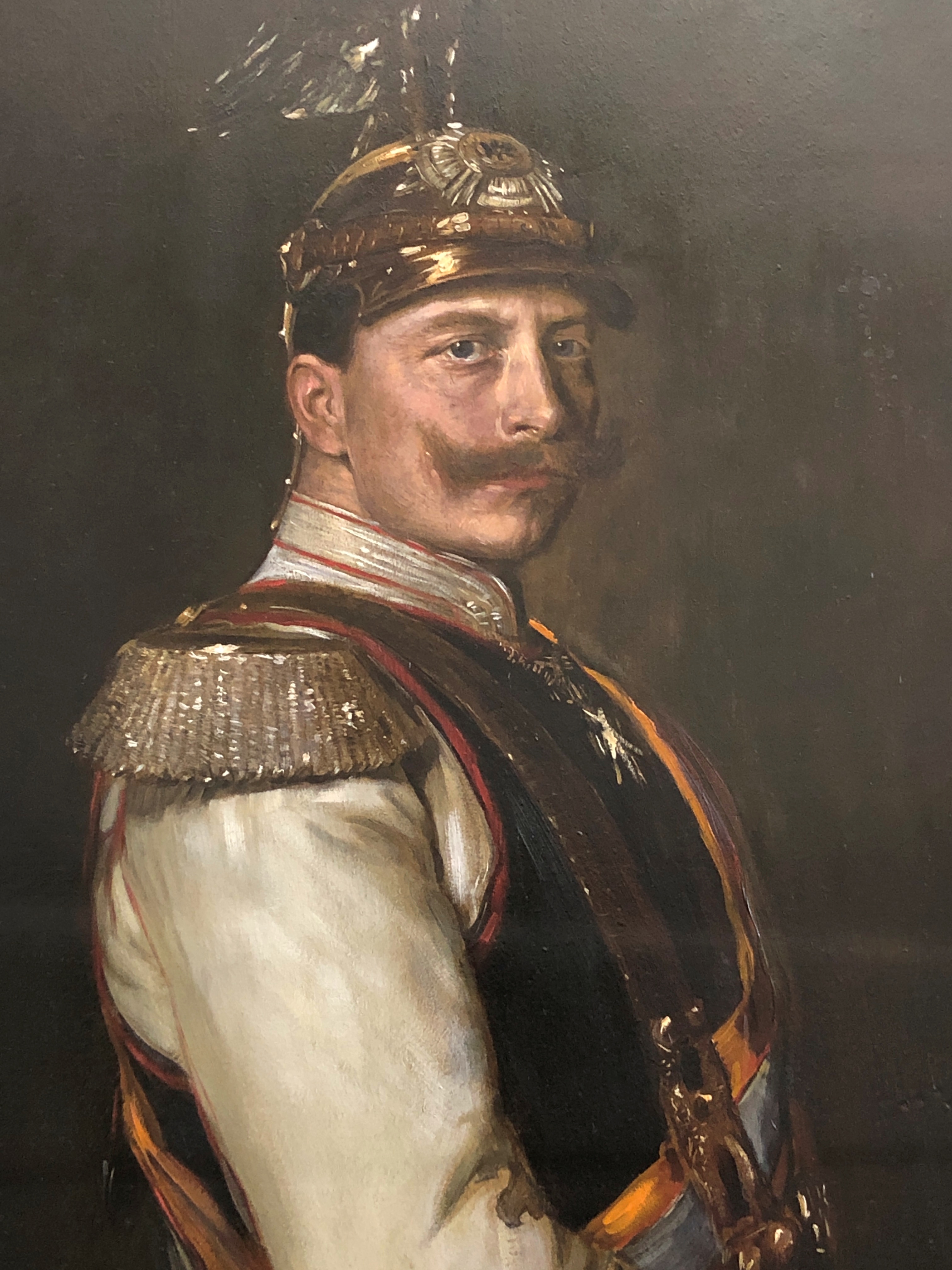
Tough luck, Willie. But at least your hope didn’t end at the end of a rope.